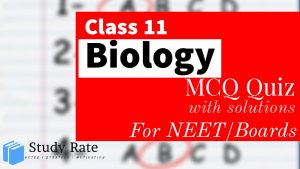We have compiled the MCQ Questions for Class 11 Chemistry Chapter 12 Organic Chemistry: Some Basic Principles and Techniques with Answers Pdf free download covering the entire syllabus for JEE/NEET and Boards. Practice MCQ Questions for Class 11 Chemistry with Answers on a daily basis and score well in exams. Refer to the Organic Chemistry: Some Basic Principles and Techniques Class 11 MCQs Quiz Questions with Answers here along with a detailed explanation.
Organic Chemistry: Some Basic Principles and Techniques Class 11 MCQs Questions with Answers
MCQ Questions for Class 11 Chemistry Chapter 12 Organic Chemistry: Some Basic Principles and Techniques with Answers
Hope the information shed above regarding MCQ Organic Chemistry: Some Basic Principles and Techniques with Answers Pdf free download has been useful to an extent. If you have any other queries of CBSE Class 11 Chemistry Organic Chemistry: Some Basic Principles and Techniques MCQs Multiple Choice Questions with Answers, feel free to comment below so that we can revert back to us at the earliest possible.
By Team Study Rate


